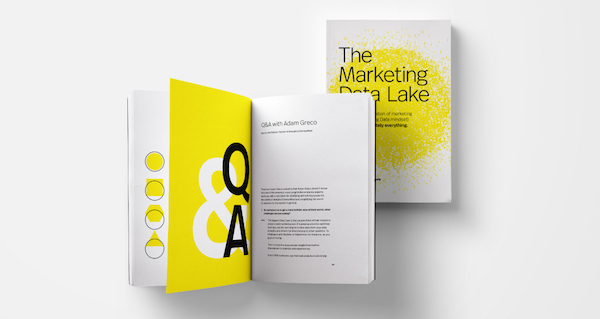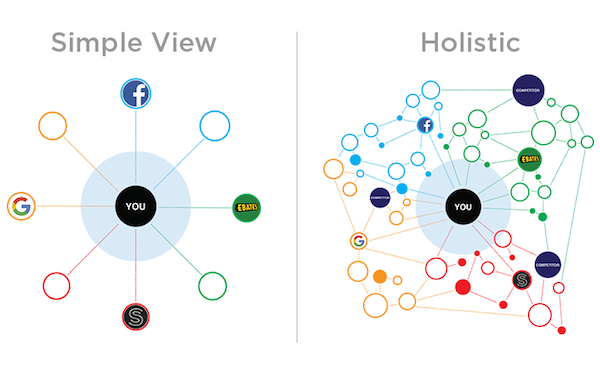There’s an exciting story that’s come out of this week’s Search Engine Strategies (SES) conference in Chicago that should inspire everyone in online marketing and the semantic web — and most all, those of us interested in the intersection of the two.
Jay Myers, lead web development engineer at Best Buy, presented a case study of what happened when they implemented the GoodRelations data vocabulary with RDFa microformat tags embedded in their pages, and the results are nothing short of astounding.
First and foremost, Jay reported that the rank of their pages that incorporated GoodRelations and RDFa rose significantly in Google. For example, the query “BestBuy Ferris Bueller” comes up with their new semantic web enabled page as #1:
http://products.semweb.bestbuy.com/y/products/7590289
It’s actually placed ahead of the far more established page:
http://www.bestbuy.com/site/Ferris+Bueller’s+Day+Off+-+DVD/7590289.p?skuId=7590289&id=47476
The implication is that Google has started to tweak their ranking algorithm to show love to pages and sites that incorporate this kind of linked data and semantic web markup. If this is true — I know, there are other possible confounding factors that no one but Google knows for certain — it could be exactly the tipping point necessary to push adoption of embedded data on a large scale.
I’ve said for a while that the best way to jump start semantic web/linked data adoption is to give companies a clear market incentive to do so. This is how good SEO practices have developed into a billion dollar industry. Merging the ideas of data web marketing into SEO — an SEO++ vision, if you will — seems like the easiest path to get everyone moving into the data web era. Google is in the ideal position to create that incentive.
But it gets better. Jay also revealed that since they launched their beta Semantic Product Web, augmented with GoodRelations and RDFa, they’ve seen a 30% increase in traffic to their pages. Again, there could be many reasons for this — not a perfectly controlled experiment — but the correlation is remarkable.
There’s certainly an incentive here for companies who take the lead. The linked data movement is itching to explode, and the whole point is to make it easy for people to leverage data from across the web into glorious new mash-ups and applications without having to tediously integrate with and maintain a different API for each and every source of data.
So as commercial implementations, such as the one by Best Buy, become available, they are extremely well-positioned to be adopted by the first wave of linked data developers and put on a pedestal: see, here’s what we can do with just a little more structured data on the web. That’s a virtuous cycle in which everyone wins — not least of which is Best Buy themselves.
Yahoo!, despite their troubles elsewhere in search, deserve credit for pushing this idea forward over a year ago with their SearchMonkey initiative. Nick Cox from Yahoo! has been quoted as saying that search results that are augmented with structured data, such as with GoodRelations, get a 15% higher click-through rate (CTR).
Speaking of giving credit where credit is due, I’ve got to take my hat off to Martin Hepp, the guy behind the GoodRelations ontology. He’s created a fantastic framework to enable businesses such as Best Buy to harness linked data as a marketing and sales vehicle. With data web success stories like Best Buy now emerging, Martin may just end up being the fellow who nudged data web marketing over that tipping point.
Thanks to Steven Forth at LeveragePoint for alerting me to this developing story. There’s also an excellent post about this on Priyank Mohan’s Semantic Technology Blog.




Great! Another success story powered by Linked Data technologies.
BestBuy is a trailblazer like The New York Times. They both publish data on the Web using W3C recommendations.
However, I quickly compare the metadata available in the RDF resources and the ones available in the HTML representation. RDF still miss a lot of valuable information.
The type of product which is available in the breadcrumb trail of the HTML page is not in the RDF.
Same thing for the matadata available in the product overview tab.
In order to get this information, any integration of BestBuy linked data still needs to parse the HTML. This is an anti pattern that should be avoided. Adding these metadata (at least the product type) to the RDF would immediately improve the value of BestBuy data. Linked Data consumers and integrators look forward for this improvement. 😉
Good points, Olimatis — thanks for describing that!
One point that’s not clear is whether it is better to implement GoodRelations markup in existing product pages, or to create a new set of pages like Best Buy have.
From an implementation perspective, it would be simpler to do the former, although there is little data as to the advantage this approach has.